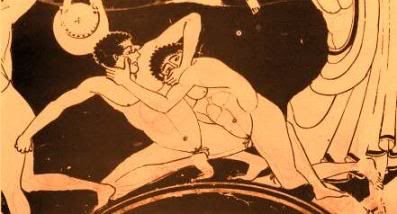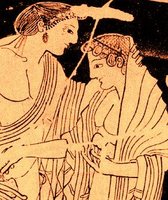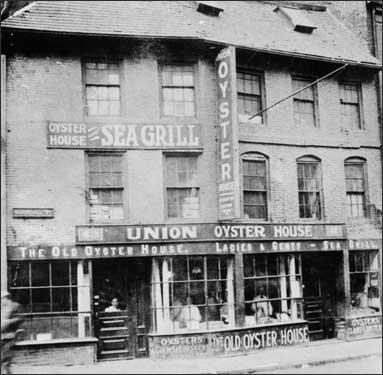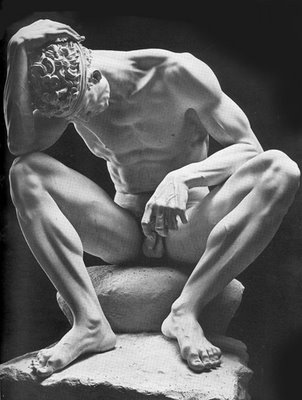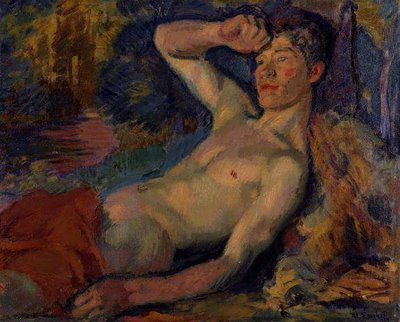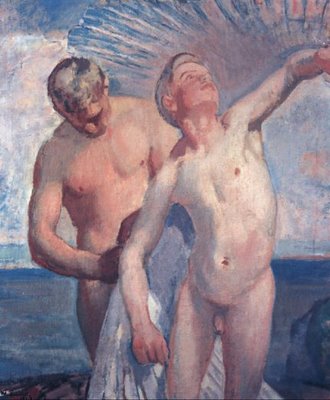A Piano Should Fall on Their Heads
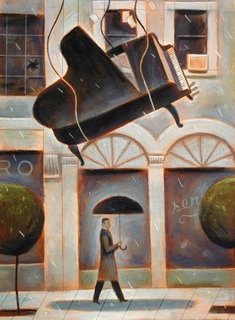 This month’s pianos are lovingly dedicated to the ex-gays who trekked all the way to New Orleans to protest at the annual convention of the American Psychological Association (APA). It really saddens me that this was the most productive task that these so-called Christians could envision for themselves in a city as devastated as New Orleans.
This month’s pianos are lovingly dedicated to the ex-gays who trekked all the way to New Orleans to protest at the annual convention of the American Psychological Association (APA). It really saddens me that this was the most productive task that these so-called Christians could envision for themselves in a city as devastated as New Orleans. Why not go down and volunteer with those organizations like Habitat for Humanity helping repair and rebuild homes damaged by Katrina? In May the New Orleans city council unanimously passed an ordinance (City Ordinance #26031) stating that those whose damaged homes were not gutted by August 29 (the first anniversary of the hurricane) risk having their property seized and bulldozed by the city.
Thousands of displaced working-class residents who are living in trailers or with family members are either waiting for insurance payments or did not have adequate insurance coverage, making the cost of gutting and repairing one’s home beyond the reach of many of the city’s poorer residents. Consequently, thousands of those whose homes were damaged by Katrina missed the deadline, not to mention the thousands of others who sought shelter in other states and haven’t yet made it back to their old neighborhoods to assess the state of their homes.
Although there were a dozen or so non-profit organizations that were gutting homes for free, there simply weren’t enough volunteers to get to every home before the deadline. The fifty or so protesters at the APA meeting could have lent a hand. Instead of hammers, however, their hands held picket signs reading: “Don’t tell me I was born gay!” and “You don’t have to be gay.”
They neglected an opportunity to do good in order to do harm. Instead of taking advantage of an opportunity to minister to their impoverished brothers and sisters, they chose to spread a message that undermines the dignity of their GLBT brothers and sisters.
Of course, they have argued that they were merely protesting the APA’s position that gay people can’t change. As I pointed out in my previous post, however, the APA has never issued a formal resolution on the changeability of homosexuals. Instead, they have condemned reparative therapy on the grounds that it is often coerced and, moreover, it treats homosexuality as a mental disorder, something the APA explicitly rejects. The APA has also expressed concern over the lack of scientific evidence demonstrating the successful conversion of unhappy homos into happy heteros, on one hand, and the abundance of scientific evidence for the harm done by so-called conversion therapy, on the other.
The idea that same-sex attraction is a form of mental illness and its religious counterpart (expressed by such organizations as Exodus International) that homosexual desire is contrary to the will of God and homosexual acts are a form of depravity contribute to the ongoing marginalization and victimization of GLBT people. The ex-gay movement has repeatedly accused the APA of undermining their dignity by refusing to acknowledge their existence, but in reality, the APA is simply refusing to endorse practices that undermine the dignity of others.
